There’s an old saying; you can take the man out of the country, but you can’t take the country out of the man. Roger Myers, with over a dozen years of service at Lehman’s, has a background in farming and country living. And he is full of country skills!
“I raise goats and chickens and a little bit of corn,” he said. Working at Lehman’s brought him in contact with lots of customers, including those interested in making maple syrup. “I listened to customers and how much satisfaction tapping trees for sample maple syrup gave them and I thought I would try it myself.”
That was several years ago and today Roger is our on-site syrup expert (#OnlyatLehmans). “Oh, I’ve made lots of messes, but I’ve learned over the years,” he said with a smile.
Roger’s Tips for Making Maple Syrup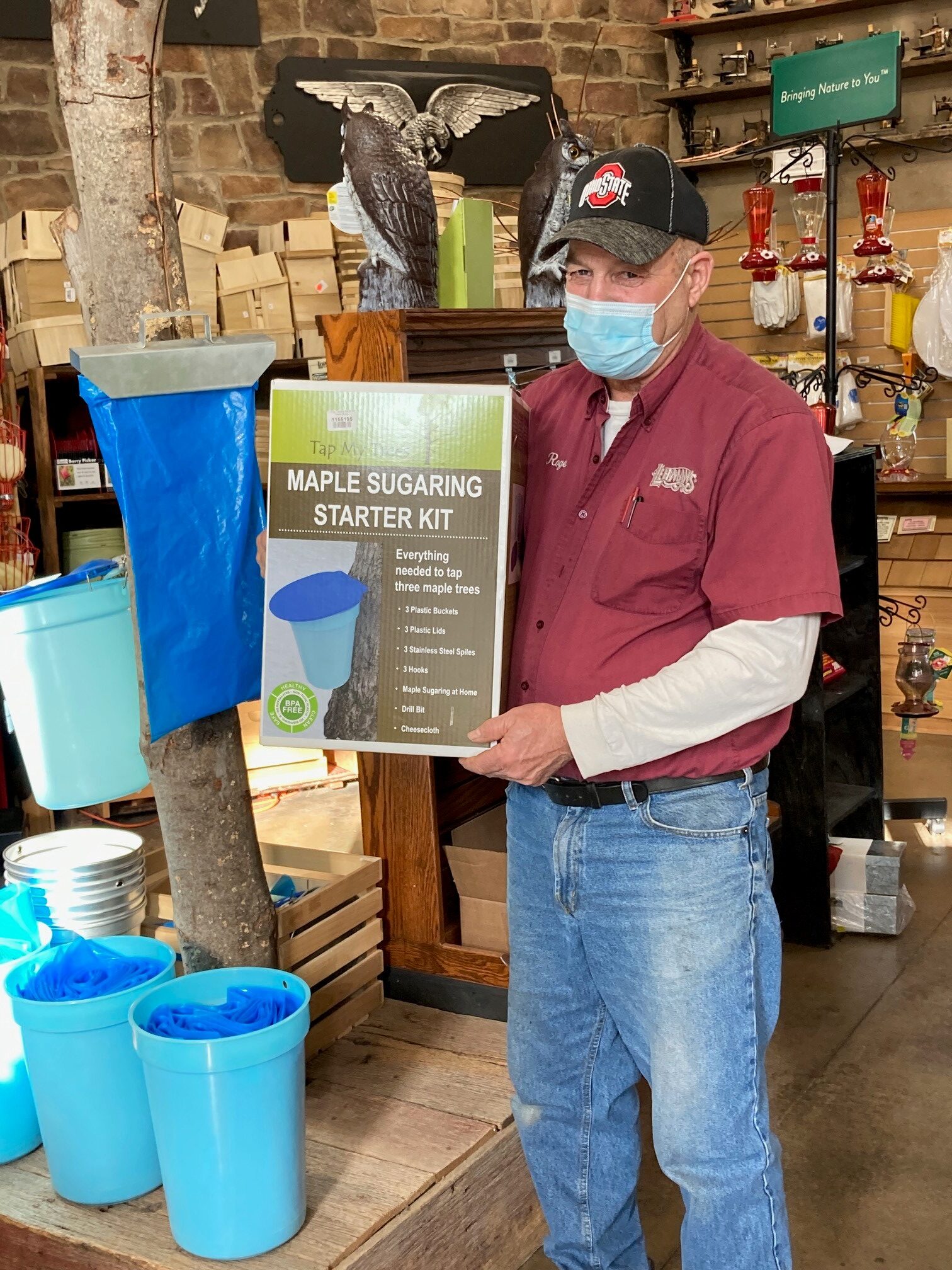
The process actually starts in the summer, when you need to identify your tress to see which ones you can tap. “My Dad could do it by the looking at the bark, but I need to see the leaves,” he said. The most commons trees you tap for syrup are sugar, canon, silver, red and black maple. Walnut, birch, sycamore and ironwood can also be tapped.
The time to tap your tress varies by region and season. “Here in Ohio, I watch the temperatures change from cold at night to sunshine in the day, typically in late February or early March. I put out one or two taps and if it starts to run, I put out more taps.” Because of these temperature requirements, the maple tapping season usually occurs in March for most locations but can run anytime from February to April depending on the year. Once the temperature stays above freezing at night or buds appear on the trees, the tapping season is over.
If you are tapping your trees too late in the season, the syrup will be dark and not sweet (in other words, you won’t be happy with the results)
The general rule is one tap for trees 10 inches in diameter: two taps for trees 18 inches in diameter and three taps for trees 24 inches in diameter. Roger said he typically empties the buckets each day, storing them until he has enough to begin the boiling process.
The most time-consuming part is boiling down the sap into syrup. “The ratio is about 40 to one so if you have 40 gallons of sap, you will get one gallon of syrup,” explained Roger. “I use my camp stove to do the boiling. But you can also use an LP Cooker.”
“Just make sure you have a solid surface to set the LP cooker on, so it doesn’t get too hot,” Roger advised.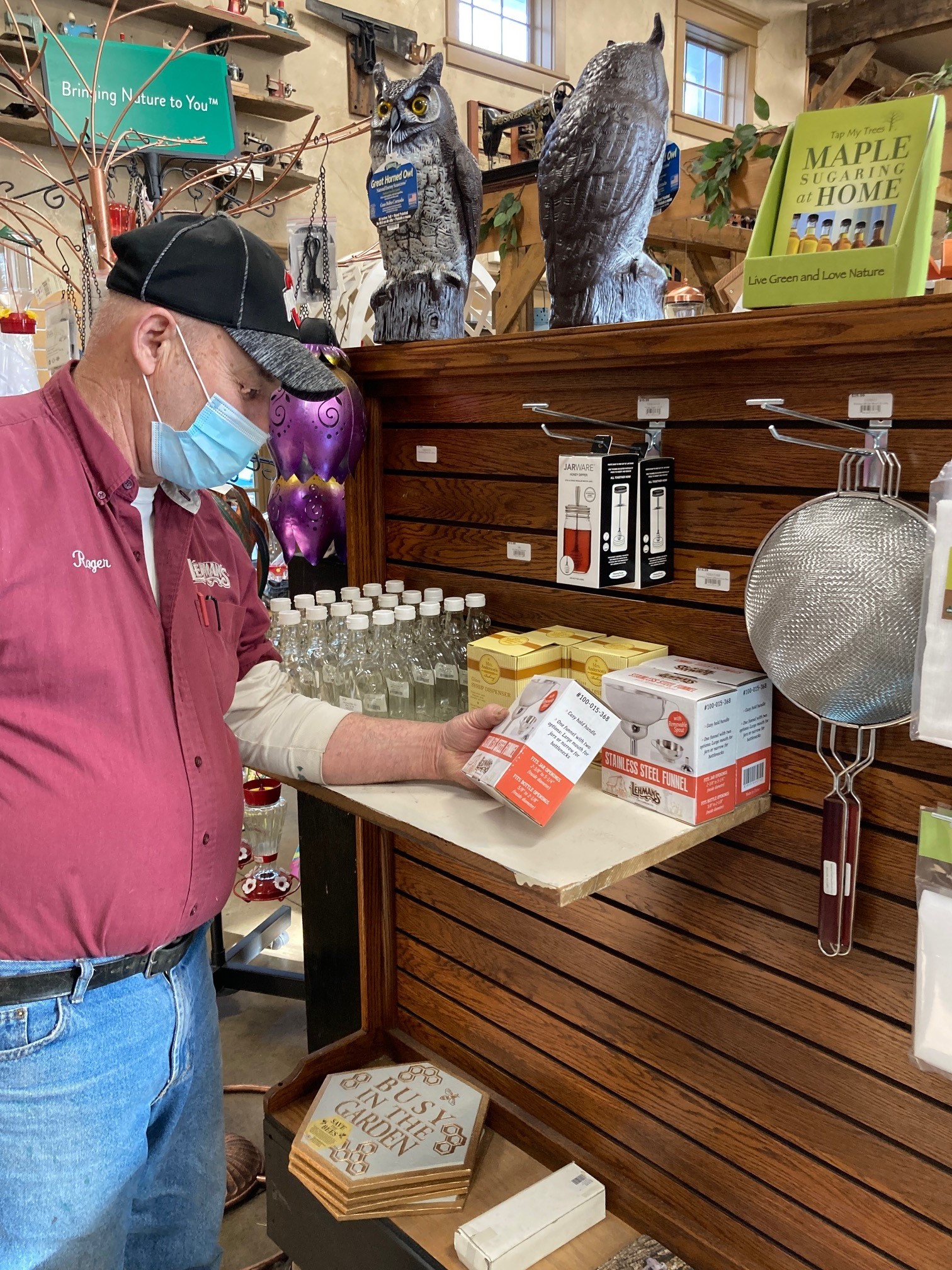
As it boils, the sugar concentrates and begins to caramelize making that dark brown color. As the water boils off, the boiling point of the liquid increases. When the liquid reaches seven degrees above the boiling point of water in your area (219 degrees F at sea level) it’s done. “My wife does the taste testing. If it isn’t sweet enough for her, I boil it longer to make it sweeter. It’s done when she says it’s done,” Roger said.
Filtering maple syrup is an important process that improves the taste, clarity and color. After the sap from the maple tree has been boiled, the natural minerals harden into niter or sugar sand. Filtering maple syrup allows you to remove the sugar sand.
Once you made your syrup, it’s important to store it properly. Glass jars are the best and it doesn’t need to be refrigerated until it is open, then store it in a cool place, out of direct sunlight. You can also freeze it.
The Lehman Family’s Wax on Snow Recipe
“My mother grew up in upstate New York, where there was lots of snow every winter. This is a treat we made every winter.”
–Glenda Lehman Ervin
Instructions for Wax on Snow:
- Bring maple syrup to a boil over medium high heat in a medium saucepan.
- Continue stirring until temperature reaches 235 degrees. Syrup will be thickened slightly.
- Remove pan from heat.
- Pack snow well in a large bowl (or walk outside and find a clean patch of snow) and test a small amount of syrup by drizzling over snow. If it doesn’t sink in too far, it is ready to pour!
- Slowly drizzle the heated maple syrup over snow – have fun making designs. The thinner you pour the more brittle it will be.
- Once cooled down and hardened, removed from snow and place on wax paper.
- Enjoy!
Michelle’s Tip on Tapping Trees
“How do you keep your sugar from boiling over? If you toss in a tablespoon of butter or rub it around the pot’s rim, the crazy bubbles and foam stop immediately.”
—Michelle Visser, author of Sweep Maple – Backyard Sugarmaking from Tap to Table.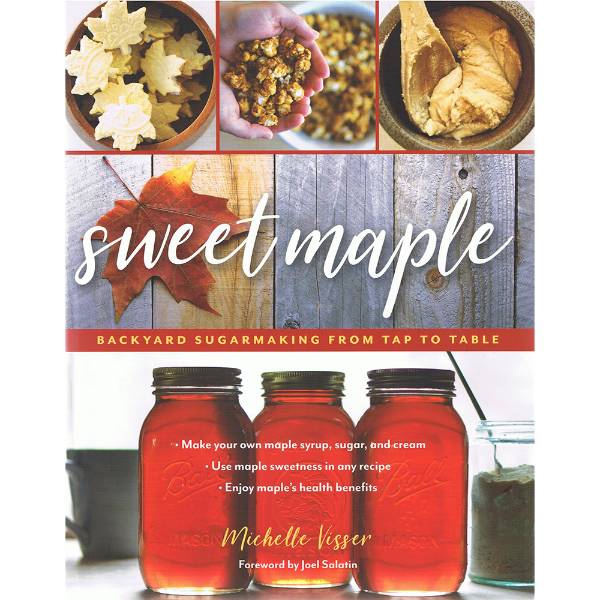
Find tips and techniques throughout the book, plus her family’s tried-and-true maple recipes to help you incorporate maple products in place of refined sugar.
Editor’s Note: This article was first posted in March 2021.

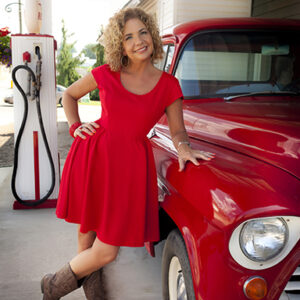
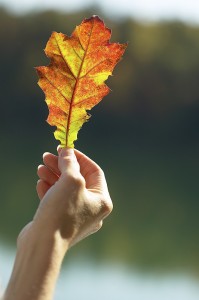




























[…] on snow.” This is a delish treat that occurs when you heat real (none of that fake stuff) maple syrup to 235 degrees and then drizzle it onto hard packed snow. You then take a fork and wrap the sticky […]
Can you tap river birch?
We have a beautiful sugar bush behind our church. I would like to tap some trees(with pastor’s approval)to make some syrup and sell for fundraiser. Is it too late to tap trees? What do I need to tap and collect syrup?